6 Black Composers Who Made Classical Music History
For centuries, dozens of prominent black composers have left their mark on western classical music.
Many of them struggled to be recognized for their accomplishments, and some of those who became acclaimed, or even world-renowned artists in their own day have become woefully under-recognized today.
This Black History Month, we hope to afford a few of these great composers the spotlight they deserve. So, here’s a look back at just a few of the great black composers who made significant contributions to their genre.
1. Chevalier de Saint-Georges, aka “Black Mozart” (1745-1799)
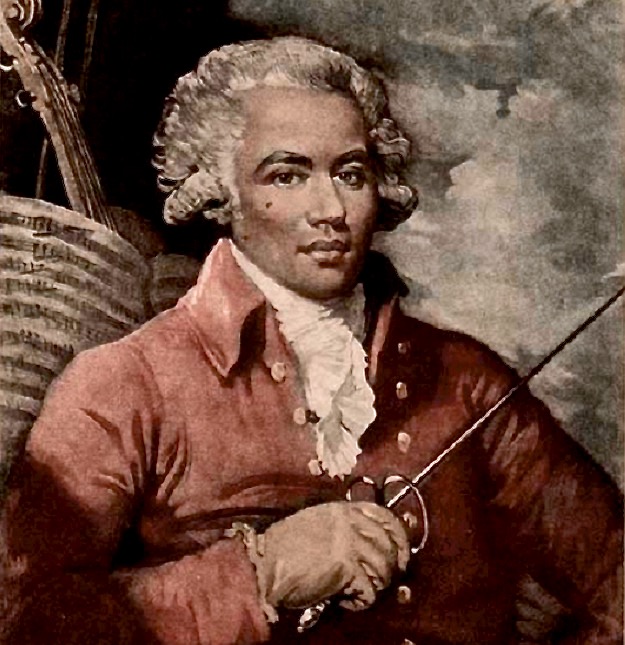
Joseph Boulogne, Chevalier de Saint-George, aka “Black Mozart” composed serious works in France near the start of its “Age of Revolution”.
Joseph Boulogne, the Chevalier de Saint-George was a musician, athlete, and soldier. Known as “Black Mozart”, he was the first-ever black composer to write significant works in the western classical tradition.
The son of a wealthy plantation owner and a female slave, Saint-George was born in Guadeloupe, and brought to France at an early age. His father wanted to turn him into a French Gentleman, and to see a freer life for him as an aristocrat in a more open cultural society that was beginning to emerge in France.
At 13 years old, his father enrolled him in a prestigious fencing school where he excelled beyond racial barriers. To further his aristocratic education, his father employed the great composers of Paris to teach his son to play the violin. Here, Joseph discovered his calling. He devoted himself completely to mastering the violin. His technique was said to be extraordinary—as if a fencer translated his right hand technique with the sword to the bow.
Each year, one of his teachers organized special concerts featuring the best musicians from across France to play united in one orchestra, and Saint-Georges was invited to play first violin. This was a daring and bold choice at the time, as a figure like Joseph was an anomaly in the otherwise uniformly white world of high society concert music. But, he wasn’t intimidated, and his performances were heralded as virtuosic.
Being a “mulatto” in what was then a homogeneously white society inspired Saint-Georges to work hard to be recognized. He soon turned to composition as a new way of challenging himself and the limits of the violin. His virtuosic writing and experiments on the violin created a new style of music that even modern masters of the violin still find it extremely difficult to play.
Joseph was a prolific composer with several operas, 15 violin concertos, symphonies and numerous chamber works to his name. He is also credited as being a rare French exponent of early classical violin composition. What’s more, Saint-Georges even served as a violin teacher to Marie Antoinette and as a colonel in the republican army. Virtually unknown to the average American, he was one of the most distinguished figures during the end of France’s old regime and the start of its age of revolution, at the end of the 18th century.
2. George Augustus Polgreen Bridgetower (c.1780-1860)
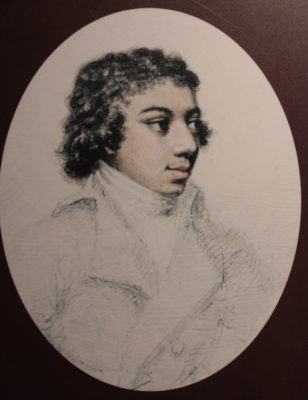
Pictured here as a youth, Bridgetower went on to become a celebrated performer and a close collaborator of Ludwig van Beethoven.
Born in Poland to a West Indian father and Polish mother, Bridgetower was an 18th and 19th century classical violinist.
During his early childhood, it is said that his father worked for Prince Esterhazy of Hungary in a castle that maintained an opera house, a private orchestra, and employed the great composer Franz Joseph Haydn. Esterhazy was a great patron of the musical arts making this childhood home the ideal incubator for the young Bridgetower’s talents.
As a child prodigy, his debut performance was in Paris, France in April 1789. Though his birth year has been disputed, he was likely only nine or ten years old at the time, and received rave reviews. That same year, his father travelled with him in order to hold concerts in London, Bath, and Brighton, England. King George III attended his concert in Bath and noted it as an exquisite performance. At age 11, the Prince of Wales put Bridgetower under his protection and appointed private tutors to him.
By the time he was fourteen years old, he became first violinist in the Prince’s orchestra and performed numerous concerts. Bridgetower quickly became one of the most famous and celebrated musicians in his time. During a concert tour of Europe in 1802, he became friends with Ludwig von Beethoven, who described him as a master of his instrument and composed his Kreutzer Sonata for the young Afro-European musician. He even personally performed the sonata for violin and piano with Bridgetower.
In 1807, Bridgetower was elected to join the Royal Society of Musicians. Four years later, he attended Cambridge University where he continued composing, and earned a degree of Bachelor of Music. From there, he taught piano and continued to perform and travel. Comparatively little is known about Bridgetower’s later years. A portrait of him is featured in a collection at the British Museum, but little in the way of physical copies of his music are known to exist today.
3. Samuel Coleridge-Taylor (1875-1912)
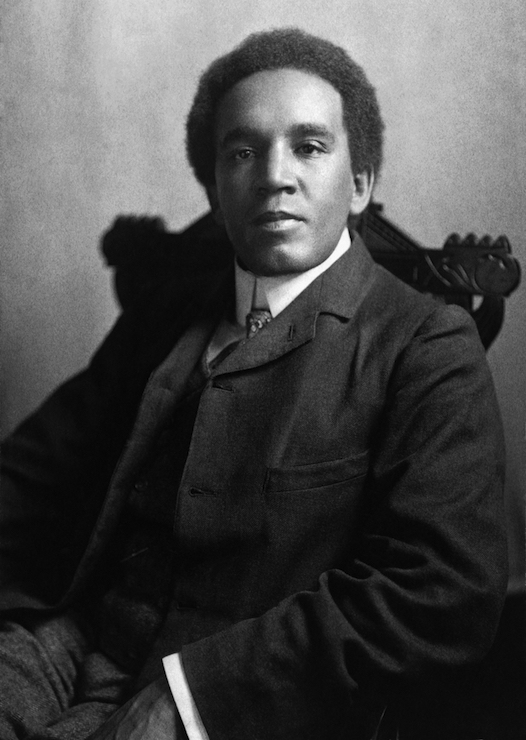
Samuel Coleridge’s composition “Hiawatha’s Wedding Feast” made him one of the most famous and popular composers of his day.
The son of a English mother and a Creole man from Sierra Leone, Samuel Coleridge-Taylor was born in Croydon, a southern borough of London. After his father deserted the family and returned to Sierra Leone, Samuel’s mother raised him in England. As a young boy, he learned to play the violin and sang in several church choirs.
In 1890, Samuel attended the Royal College of Music as a violin student. While there, he studied composition under the tutelage of Charles Villiers Stanford and began his career as a composer, developing a reputation for his accomplished compositions. He would receive his first commission only a year after leaving college.
Samuel went on to serve as a faculty member of the Crystal Palace School of Music and conduct the orchestra at the Croydon Conservatoire. In 1896, Edward Elgar recommended him to the Three Choirs festival, the first of many times Elgar would assist him in his career. In 1898, Samuel wrote Hiawatha’s Wedding Feast—a composition that made him a household name on both sides of the Atlantic—and performed in concert over 200 times.
Throughout his career, he drew on his heritage to showcase the dignity of black culture and create works such as African Romances (1897), theAfrican Suite (1898), and Toussaint l’ouverture (1901). By the time of his death, Samuel had already toured the United States three times and performed at the White House for President Theodore Roosevelt.
4. Florence B. Price (1887-1953)
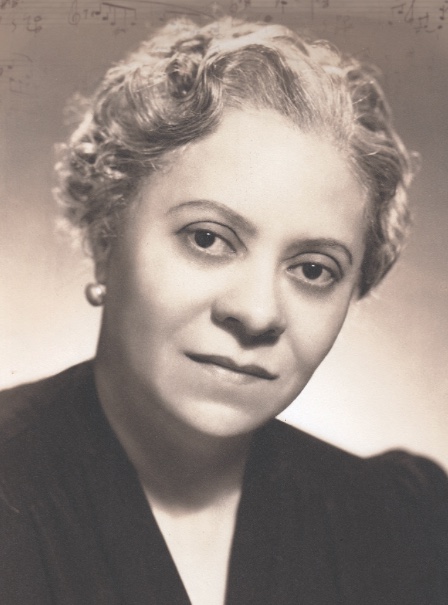
Composing for both orchestral and commercial audiences, Florence B. Price became a breakthrough female black composer in the first half of the 20th century, when parts of America still had racial segregation laws on the books.
Florence Price is known for being the first African-American woman to be recognized as a symphonic composer, and the first to have a composition played by a major orchestra. In 1933, the Chicago Symphony premiered her Symphony in E minor.
Born in Little Rock, Arkansas, Price’s music draws upon her southern roots. At the age of four, she gave her first performance. Later, she would attend the New England Conservatory of Music.
Returning to the south, she became the director of the Clark College music department in Atlanta, Georgia, before moving to Chicago in 1927. In 1932, she won the Wanamaker prize for her Symphony in E minor. The next year, on June 15th, her symphony was performed at the Century of Progress Fair by the Chicago Symphony.
This romantic piece in four movements would pave the way for Price’s work to be performed by orchestras both nationally and internationally over the next two decades. Price was also called upon to perform herself, in orchestras, and as an accompanist to silent films.She even arranged music for the WGN Radio orchestra and penned popular music for commercial purposes.
Price went on to craft over 300 compositions. In 1940, She was inducted into the American Society of Composers, Authors, and Publishers. Despite the great success she saw during her own lifetime, Price’s numerous compositions are rarely played today.
5. William Grant Still (1895-1978)
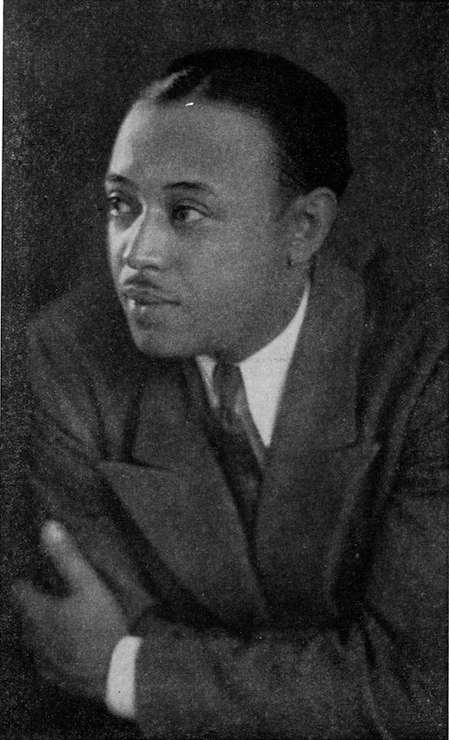
William Grant Still composed for films and symphony orchestras, and became well known as a conductor and the composer of his “Afro-American Symphony”.
William Grant Still was an oboist, arranger, conductor, and composer of jazz and popular music themes. Like Price, Still also grew up in Little Rock, Arkansas.
He is credited with a long list of “firsts”. Still was the first African American composer to write a symphony performed by a major American orchestra and as the first African American to conduct a major symphony orchestra (the New Orleans Philharmonic).
He was also the first African American composer to have an opera produced by a major American company (the New York City Opera), and the first to have an opera performed on national television.
In the beginning of his career, William found work arranging for theatre orchestras and early radio. He attended Wilberforce University and Oberlin Conservatory of Music and studied under George Whitefield Chadwick and Edgard Varese.
From there, he went on to write 150 works and to compose for Hollywood films. The Rochester Philharmonic Orchestra also premiered his Afro-American Symphony in 1931, and William received a stream of commissions from numerous major orchestras, CBS, and the New York World’s Fair.
6. Scott Joplin (1868-1917)

Scott Joplin, famous for his ragtime hits, also composed operas, one of which helped earn him a posthumous Pulitzer Prize.
Often called the “King of Ragtime,” Scott Joplin is credited with having composed 44 original ragtime pieces. But in addition to this, he composed one ragtime ballet and two operas over the course of his unfortunately short career.
The first ragtime hit that earned Joplin fame as a composer and performer was “Maple Leaf Rag”. It was widely published and distributed—a blockbuster hit for its day. (More modern audiences may remember his tune “The Entertainer” from the film The Sting starring Robert Redford and Paul Newman.)
Although his first opera was lost, his second opera, Treemonisha, was partially staged in a 1915 premiere. Unfortunately, it wasn’t fully presented until decades after his death, in 1972. For this and other contributions, Joplin was posthumously awarded the Pulitzer Prize for music in 1976.
Ryan Merriweather is an audio engineer, tech enthusiast, and writer.
Please note: When you buy products through links on this page, we may earn an affiliate commission.






